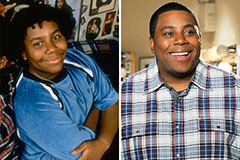Taking advantage of the power of AI to make people dance is both a clinical wonder and a creative procedure that demands a deep understanding of both human kinetics and artificial intelligence algorithms. The main idea focuses on feeding the AI system with substantial information regarding human motions, rhythm, and existing dance kinds. Artificial intelligence versions then assess this data, finding out intricate dance patterns and styles that an AI can produce or replicate with original dance series. This application of AI varieties from creating straightforward dance grooves to crafting complicated regimens for numerous categories of music. With a gesture comparable to choreographer's assisting hand, AI dance generators have ended up being crucial in the choreography music sector, where they provide fresh viewpoints and ingenious regimens that push the borders of modern dance.

One eye-catching element of AI dance generators is their ease of access and democratization of dance. These devices encourage individuals without official dance training to check out dance development, leveling the playing area for those interested in rhythm and motion.
The synergy in between dance and music becomes extra noticable with features like free lyric video manufacturers. As dance becomes a lot more intertwined with aesthetic aspects, the addition of verses can boost the narration facet of a performance. By integrating AI-generated dances with lyric display screens, musicians can develop thorough visual and auditory experiences, improving both the stirring and narrative measurements of a piece. With these integrations, AI not only help in the diversity of dance styles however additionally in the creation of multimedia efficiencies that talk with a digital-savvy audience.
Choreography music further exemplifies the crossroad where music-inspired dance satisfies AI innovation. AI tools can experiment with mixes and sequences that human beings might ignore, providing one-of-a-kind interpretative dances that improve the cultural tapestry of dance.
Concerning AI dancing: it's important to recognize that it is not changing humans yet instead augmenting their innovative capabilities. The objective is to offer a brand-new tool for expert choreographers and dancers to increase their horizons, pressing innovative limits and checking out uncharted territories within the dance self-control. AI can promptly assess a dancer's performance, giving feedback on strategy or recommending potential improvements. This ability outfits dancers with a real-time instructor, supplying insights that were previously limited to workshop settings or based on human analysis.
The applications of AI dance innovation are not simply restricted to home entertainment. Consider its usage for restorative functions: AI can design dance routines that focus on specific motion patterns beneficial for people going through physical therapy. By enhancing the precise activities required for recovery, AI leverages the restorative potential of dance to sustain far better outcomes in clinical settings. On the other hand, schools might release AI dance devices to enrich their carrying out arts curriculums, supplying trainees direct exposure to a broad variety of dance styles while allowing them to team up in developing original choreography.
The essence of AI dancing is its endless capacity to influence and introduce. Where typical dance types have actually evolved with social exchange, AI presents a worldwide platform for cross-cultural impacts to seamlessly fuse, creating brand-new fusion genres special to the electronic age. By connecting cultural and geographic separates, AI-infused dance offers a common language, urging social exploration and mutual understanding.
Technological development in dance likewise delights the possibility of boosted performances that blend humans and technology. Envision efficiencies where human professional dancers perform together with AI-generated avatars, creating synchronized ensembles that stretch beyond the limitations of human physicality. These mixed reality performances challenge standard narratives of what comprises dance, welcoming target markets to participate in exciting electronic spectacles.
Equipment discovering versions then assess this data, discovering detailed dance patterns and styles that an AI can duplicate or generate with original dance sequences. With a motion akin to choreographer's directing hand, AI dance generators have actually become important in the choreography music sector, where they offer fresh point of views and ingenious regimens that push the boundaries of contemporary dance.
To conclude, the surge of AI in dance signifies not just a technical technology but a cultural shift that improves how culture approaches dance, music, and artistic expression overall. With choices like 'AI Dance Generator Free,' individuals can seek creative exploration unrestricted by traditional obstacles. Free lyric video manufacturers promote the blend of message and activity for engaging narration. Meanwhile, choreography music exemplifies AI's capacity to craft integrated imaginative expressions, reverberating with the musicality of an item. Choreography Music As AI innovation remains to progress, we will likely witness a growing variety of academic and collaborative ventures that utilize AI to redefine the borders of dance. Eventually, the new AI dancing landscape doesn't change human imagination however rather expands its measurements, supplying a new language where musicians can proceed to express the beauty and universality of dance.
 Kenan Thompson Then & Now!
Kenan Thompson Then & Now! Elisabeth Shue Then & Now!
Elisabeth Shue Then & Now! Jane Carrey Then & Now!
Jane Carrey Then & Now! Tina Louise Then & Now!
Tina Louise Then & Now! Teri Hatcher Then & Now!
Teri Hatcher Then & Now!